Flying Update (Part One)
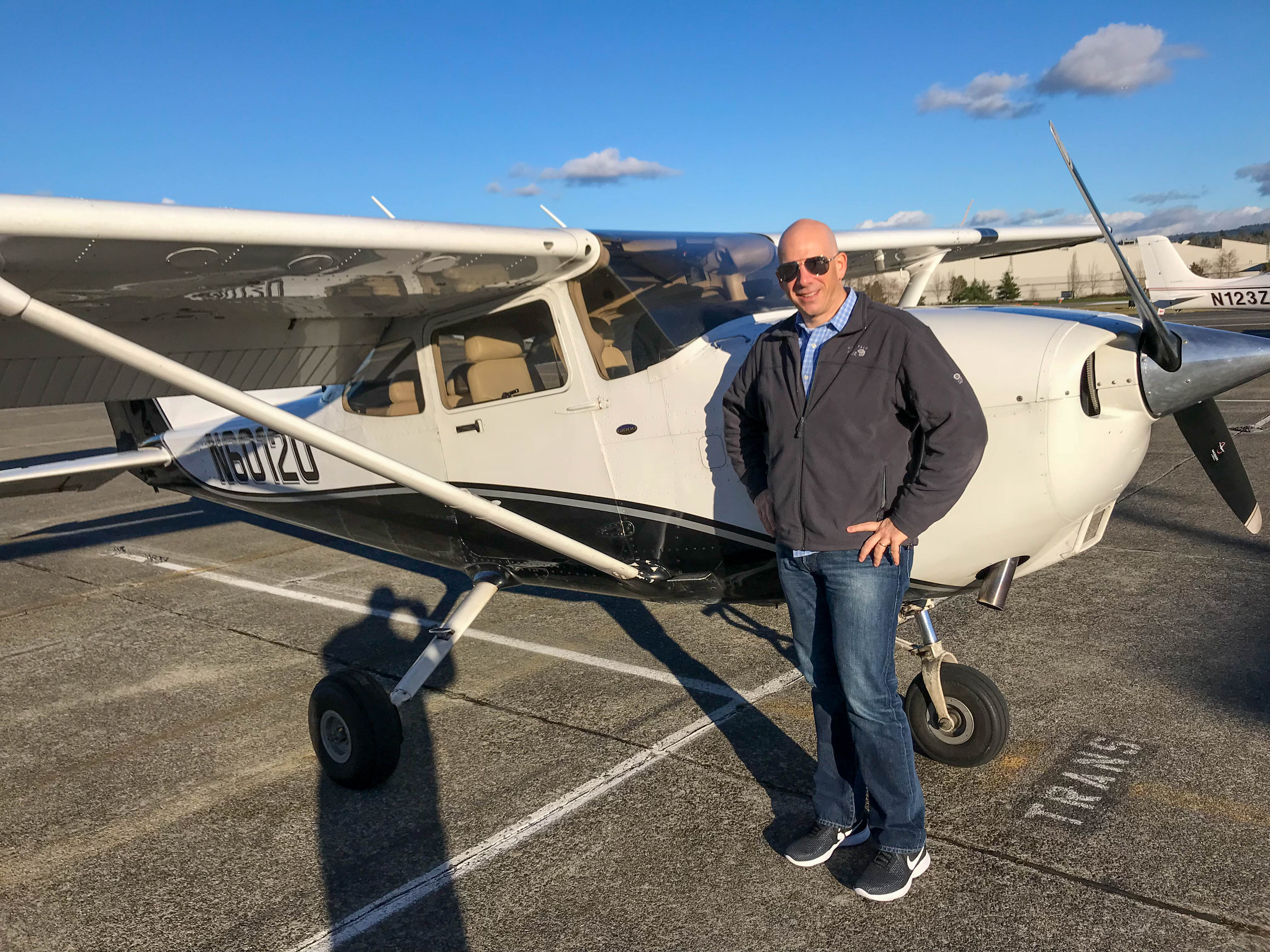
Wow, it’s been a minute. As is typical for me, I had big plans for this blog, creating a diary of every step of my flight training. Then reality happened. I know so many of my faithful readers have been wondering what happened. “Are you ok?” “Did you finish your training?” “Are you flying Air Force One now?” All these questions, and more will be answered below. I’ll do this in two parts. Part one here, finishing my certificates, and then I’ll wrap it up in part two, where I’ll talk about what it’s like to actually be a pilot. I promise I won’t go dark on this two-part series! Part two is mostly written already, I’ll post it shortly.
The TL;DR: I did get my private pilot certificate. I then bought an airplane (a 2007 Cessna 182 Turbo Skylane, N121GS), I got my instrument rating, flew all over the US, then got a new job in 2021, sold my airplane and haven’t flown since. It’s been quite a journey. I’m sitting here, three and a half years since my last flight, and I think about it every day. There was something about being up there that … I don’t know, it’s indescribable. Some might have found it boring, but I never did. Anyway, let me take you through the key events.
Finishing Private
I don’t remember too much about the private pilot checkride. There was a 90 minute oral portion and an hour or so flight. It was December 2017. The weather in Seattle for VFR (Visual Flight Rules) flying in December can be sketchy, and getting an appointment with the DPE (Designated Pilot Examiner) can take quite a while. We lucked out that the weather was great on the day she was available.
 Taken Moments After Completing the Private Checkride
Taken Moments After Completing the Private Checkride
I landed the plane at the end of the checkride, and she said something to the effect of, “If you taxi and park the plane without running into anything, you’ll be a private pilot.” Nice. I’m pretty sure I was on a (commercial) flight to Philly a day or two later for the Christmas holidays, and remarked to my wife that it was nice to be able to go on the vacation with the checkride over with.
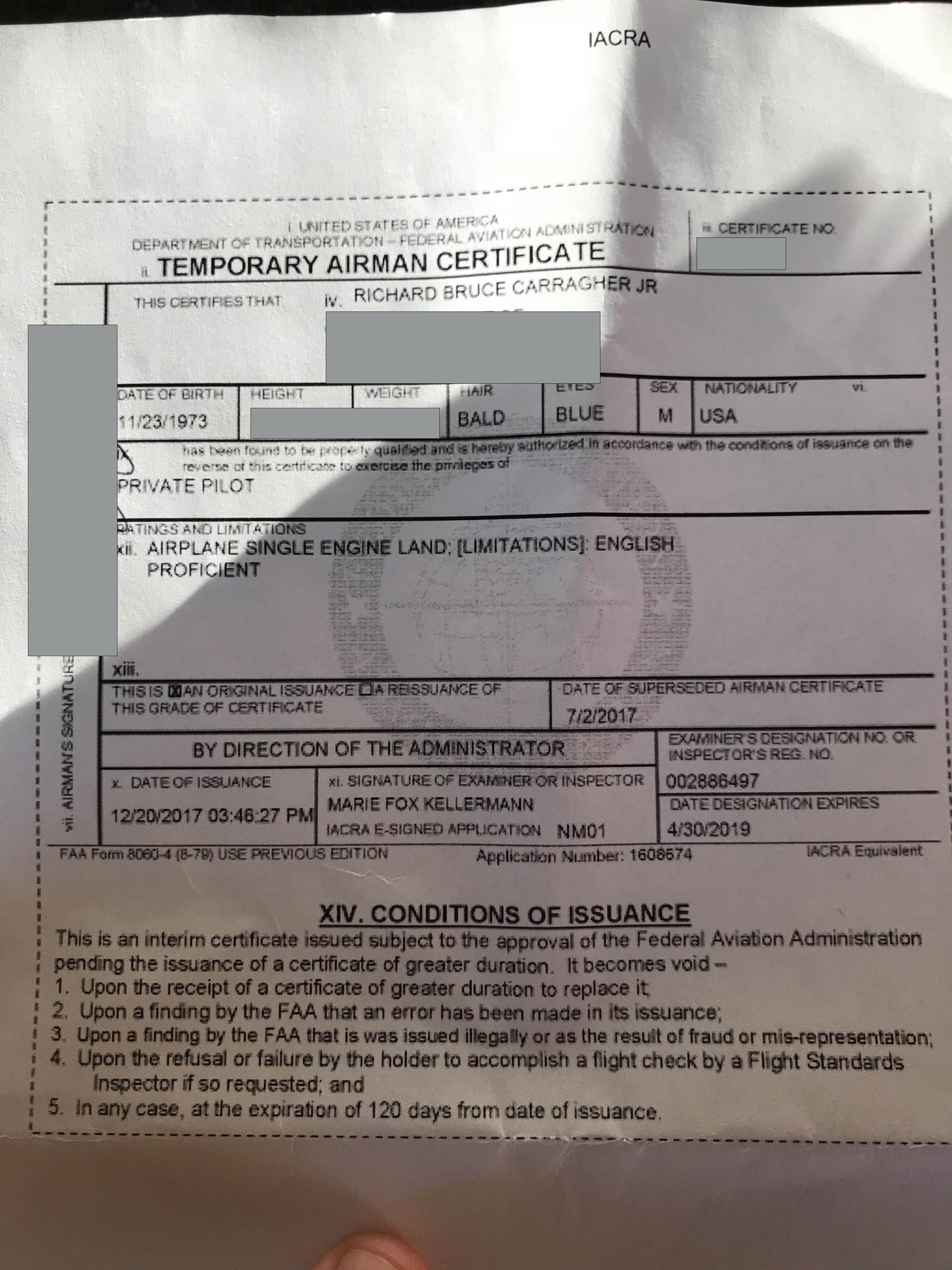 My temporary certificate (i.e. license). Legal to fly!
My temporary certificate (i.e. license). Legal to fly!
Getting the Instrument Rating
As a private pilot, I was legal to fly VFR, or Visual Flight Rules. This meant that the weather had to be good and I couldn’t fly too close to clouds. The next step to further my piloting skill set would be to get an Instrument Rating, which (per the name) allows you to travel only with reference to the instruments in the plane (as opposed to looking out the window). I started training for it within weeks of finishing my private. I had a couple motivations for pursing it:
- I wanted to leave the door open to getting a job as a commercial pilot someday, and the Instrument Rating is a requirement for that.
- You may have heard, the weather in Seattle is often cloudy. Having the rating would enable me to fly more often, even in suspect weather.
- I did a bunch of research about what kills newbie pilots, and flying into a cloud inadvertently without the proper training is in the top 5.
- I really love learning, and found flight training just so much fun.
Flying in the Air Traffic Control (ATC) “system” is a good time. Maybe it’s because I’m a tech guy, but it’s very technical. The planning, the rules, the more technical way you have to fly. You have to learn a lot more about the systems of the airplane, the way the instruments work, etc. So I really enjoyed the training a lot.
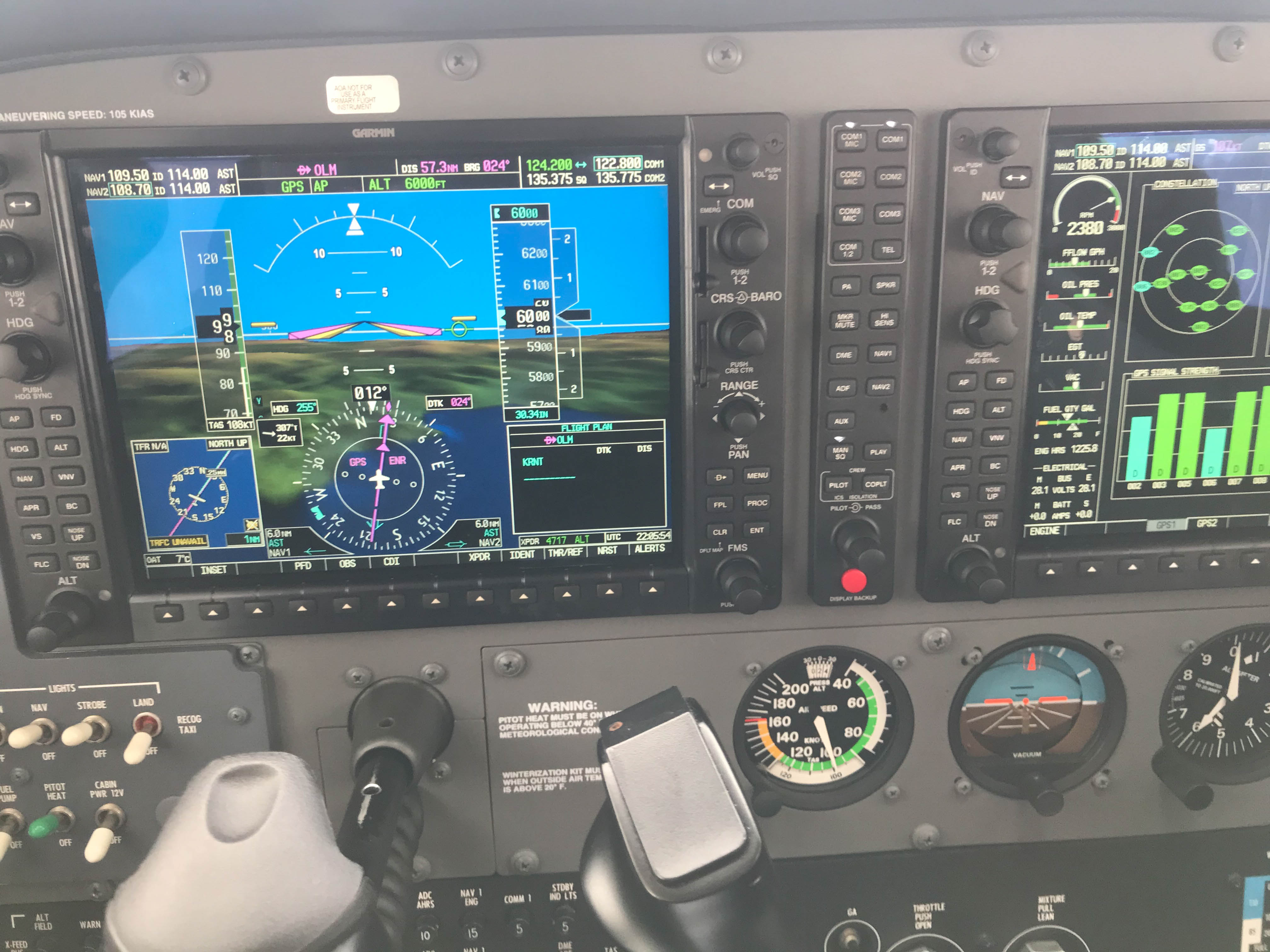 The Instruments
The Instruments
As part of the training, I needed to accrue flying hours, i.e. just go fly. Some of this could be alone (although I could only fly VFR these days). Some needed to be with my instructor so I could be in instrument conditions. I was able to get checked out in a couple other airplanes, allowing me to leverage the private pilot cert. I was able to rent, in addition to the Cessna 172 I did all my training in, the Cessna 162 (a really small plane I didn’t love), the 182 (then I bought one), and the Diamond DA-40. The Diamond is a fun plane - the control stick is between your legs. I felt like a fighter pilot when I flew it. The pictures below were from a breakfast flight I did with my instructor and JJ over to The Spruce Goose.
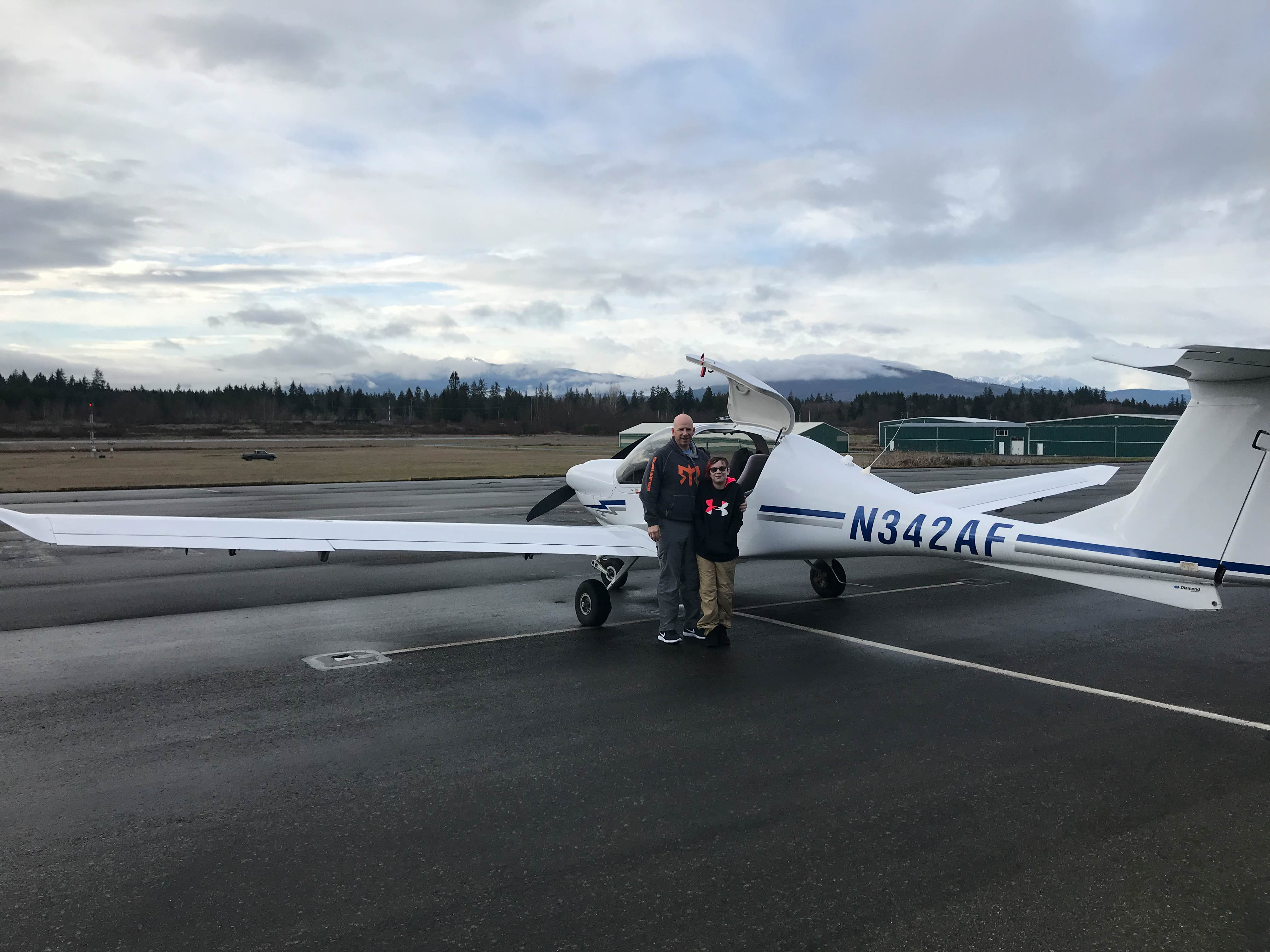
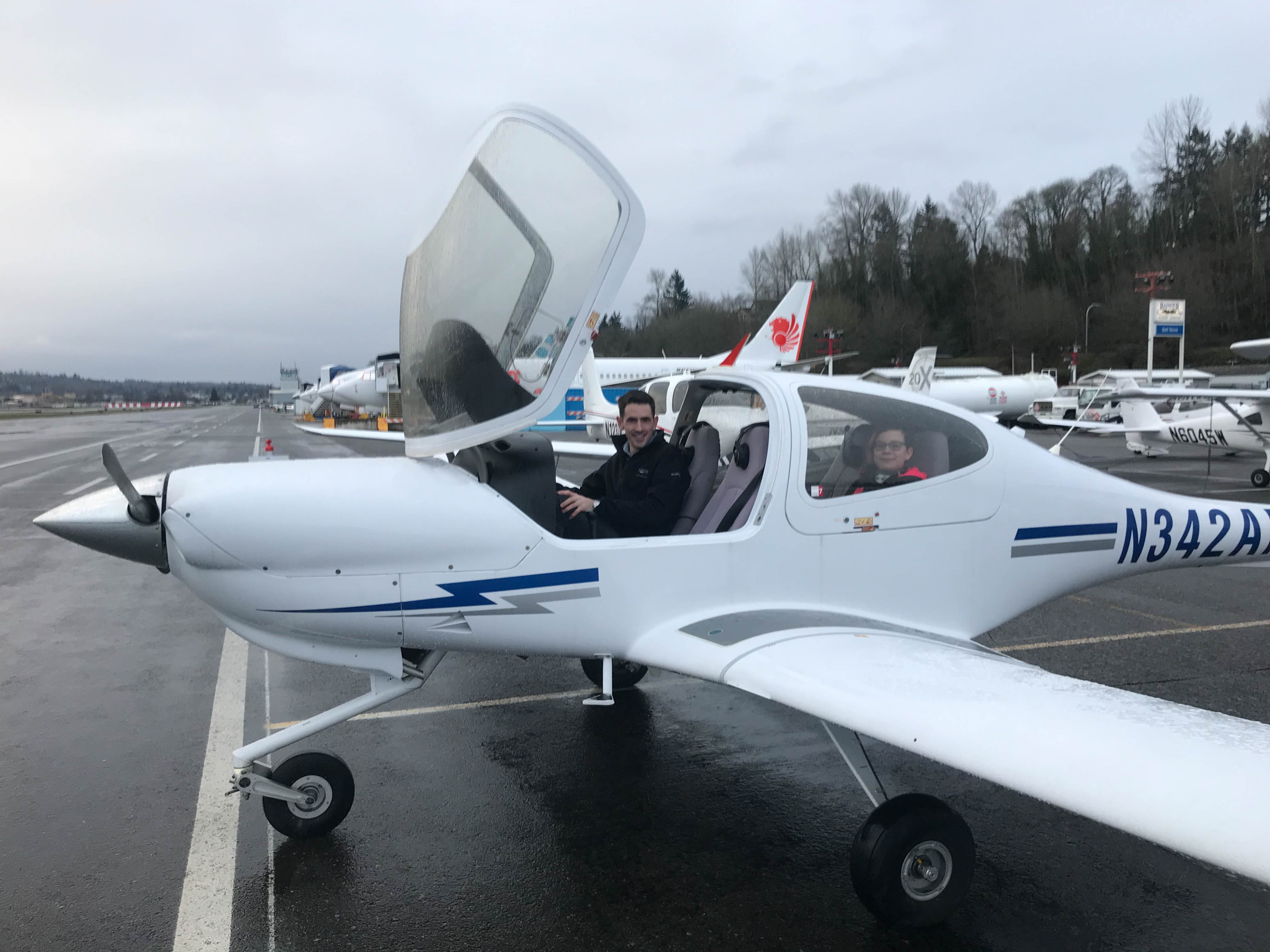
One notable day, I was out with an instructor, I think it was March, and we got into a cloud and started taking on a lot of ice. Ice is one of the dangers of flying in the clouds - it can accumulate really fast on an airplane, making it heavy and less aerodynamic. Smaller airplanes don’t have any defense against this, and just need to avoid it, while airliners and other more capable airplanes have multiple ways to shed ice. On this particular day, we didn’t expect it and it got nasty pretty quickly. This was the only time in all my training where my instructor wound up fully taking over. He requested a higher altitude from ATC. Due to the additional weight of the ice, the airplane got pretty slow and struggled to climb, but slowly we got higher and were able to break out of the cloud layer. Once we were in the clear, the ice shed from the plane and we were good to go. This was my number two scariest moment flying (I’m not sure I’ll talk about my number one).
 Ice!
Ice!
The Instrument Checkride
I actually took detailed notes right after this checkride, because it was a little bit crazy. Some background: For the checkride, there’s an oral portion and a flying portion. The oral portion is just a knowledge check, making sure you know the rules and regulations (of which there are many for instrument flying). The flying portion requires you to demonstrate a number of flying skills, including flying multiple different kinds of approaches. For this story to make sense, you need to know what an approach is. They are simply charted pathways for pilots to transition between the “enroute” portion of your flight to landing at an airport. There are several different kinds that rely on different navigation technologies (GPS, ILS, VOR), and they specify very precise locations/altitudes at different points as you, ahem, approach an airport. You can read more here, if you’re interested. Learning how to do this well is probably 80% of learning instrument flying. The rest is learning how to use the instruments to hand fly, radio communications, and departure procedures. These things don’t take as much time/attention to learn, though being able to hand fly when you can’t see the horizon is a bit challenging.
I was supposed to take the checkride in 4VW (“Four Victor Whisky”, one of the newer Cessna 172s at the flight school). It was a newer plane that had a nice autopilot. Unfortunately, it was down for maintenance, so I got moved into another 172 which had a defective autopilot (it would click on, but then automatically disconnect). This matters with instrument flying! The autopilot keeps the airplane straight-and-level, enabling the pilot to work on other things. In IFR, there’s a lot to do, and if the autopilot is handling some tasks, you’re free to do the rest. However, I was trained to fly in the clouds by hand, so it wasn’t that big of a deal. The difficulty factor would be higher, but not impossible.
In any case, my DPE, Marie, arrived promptly at 9 AM and we started the oral portion of the checkride. The oral went just fine. I felt well prepared for it. I remember this part taking about an hour. The one detail I got wrong is what if you don’t take off within your clearance window at an untowered airport and then you don’t contact ATC? They send search and rescue for you! Good one to remember.
Once the oral was completed, we started prepping for the flight. Getting weather, talking through the flight plan. We learned that Tacoma Airport’s tower was temporarily closed. Uh oh. This was where all the instrument checkrides in our area were done, and where I had practiced many many times. Marie and I discussed, and we were pretty sure we could still do our approaches there because we’d mostly be working with Approach (the part of ATC that you’re working with right before you transition to the airport’s airspace). However when we were picking up our clearance from Renton ground they told us that ATC was banning any appraches into Tacoma. We went back-and-forth a couple times to try to figure out whether or not this was all aproaches? We ultimately decided to just get up in the air and talk to Seattle Approach.
The takeoff went fine - I executed the departure procedure correctly and we were in the air. Renton tower handed us off to Seattle approach. Seattle approach told us that they are not allowing anything into Tacoma due to the tower being closed. Even the DPE was confused by this, but we had to go with it. What to do now? As mentioned above, I needed to demonstrate a certain number and type of approaches, and I had practiced all of them at Tacoma. At this point I could have canceled the checkride, and tried again once Tacoma was back online. However, Marie was scheduling weeks out and I wanted to just get it done. She suggested we could do all the necessary approaches at Bremerton airport. Fine. I asked Seattle for vectors to the ILS 20 at Bremerton, and started getting ready. All these airports are within 30ish miles of Renton, so transit time wasn’t too long.
It’s hard to describe the complexity I was managing. I’m on a test, so tensions are high. I’m in an airplane that doesn’t have a working autopilot. The weather that day was ok, but we were in and out of a cloud layer so it was a little bumpy and we had a crosswind. And now I’m going to do a series of complicated approaches in an unfamiliar airport. This was stressful.
You get assigned very precise instructions when you’re flying IFR. “Cessna Eight Charlie Alpha, fly heading 285 maintain 3,000”. I’m expected to fly that exact heading an maintain that exact altitude (within 100ft). While I was getting all sorted for that first approach, I busted altitude, I was 200 ft off. I saw it and fixed it immediately. Marie noted it, and made it clear that I couldn’t do that again or I’d fail the checkride.
Anti-climax Warning: I managed to do everything I needed to do. Did the ILS, a partial panel approach (simulating one of the instruments being broken), a circle-to-land. I did a holding pattern. Then did some “unusual attitudes”, where Marie had me close my eyes, she put the airplane into a precarious situation, and I needed to correct it using only the instruments. It all went fine. At one point, Seattle Approach actually asked me to switch to the local Bremerton frequency to ask another pilot to cancel their own IFR plan. Even Marie laughed and said, “What else are they going to throw at you today?”
Tacoma Tower was closed because they were having a staff barbeque.
And then what happened?
So that’s basically the story. We landed back in Renton, and Marie used her classic line, “Provided you can taxi safely back, you’re an instrument-rated pilot.” Hooray!
I used that rating super heavily for the next few years! That’s what we’ll talk about in part two, where I talk about some of my flying adventures.